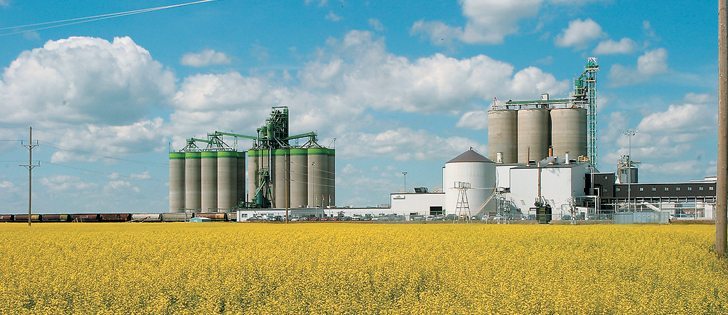Disappointing.
That’s a word that comes up again and again when farmers, analysts and crushers discuss the performance of Canada’s canola processors this crop year.
Even with a huge crop and an expanded processing capacity, canola crushers might not match the 2012-13 total, with capacity use in recent weeks running at less than two-thirds.
“It is disappointing,” said Brett Halstead, chair of the Canadian Canola Growers Association.
“I think it’s disappointing for the canola crushers, too.”
The current trouble began in the week ending May 28 when the weekly crush pace fell almost 24 percent. The next week it fell another 6.6 percent. At 108,799 tonnes that was only about 61 percent of capacity.
Read Also

Short rapeseed crop may put China in a bind
Industry thinks China’s rapeseed crop is way smaller than the official government estimate. The country’s canola imports will also be down, so there will be a lot of unmet demand.
Things picked up in the week ending June 11, but still the crush capacity use was less than 65 percent.
Year-to-date by June 11, the number of tonnes crushed was almost identical to 2012-13.
In the current year to date, capacity use is just over 80 percent.
Last year at the same point it was 84.4 percent but that was before some of the plant expansions were complete.
Greg Kostal of Kostal Ag Consulting said production slowdowns are common in summer as companies do maintenance before gearing up for the new crop.
Richardson International said its Yorkton, Sask., plant began maintenance this week.
This recent slump is a letdown because it hasn’t allowed the ex-panded crushing industry to show what it can do.
“When we look back in retrospect, we’re going to be disappointed,” Kostal said.
This current crush is down 30,000 tonnes a week from the pace in the winter and early spring, he noted.
“You’ve had three weeks in a row of sub-par performance.”
Fat margins were available to crushers who could get canola, crush it and get the oil and meal to markets. Oil demand was good and U.S. protein meal demand was red hot because of the short supplies of U.S. soybeans.
However, crushers complained they couldn’t get oil and meal to the market because of clogged railways, preventing them from fully benefitting.
Halstead said he sympathizes with the crushers, but he’s more sorry for farmers, who left even more money on the table. Crushers passed on some of their costs by widening margins to profit killing levels.
“Farmers have a lot of money invested too, in each crop, and when they see a really disappointing basis, it’s depressing,” said Halstead.
“They have big crops they can’t move and then it gets reflected in the basis, too.”
Moving old crop canola to crushers isn’t necessarily easy. For example, the Cargill plant in Clavet, Sask., has no old crop bids, listing June, July and August prices as “full” on its website.
The recent weak pace of crushing isn’t helping reduce stocks, but strong exports are helping.
“Back six months ago, carryout (estimates) for industry was something probably with a three in front of it,” Kostal said, meaning three million tonnes or more.
“Now you’re talking mid-twos, low-twos.”
Halstead said the crushing industry hasn’t processed less than last year, but it seems like it has because farmers have so much canola in the bin, and farmers all know that the crushers have built up their capacity.
“We should be way ahead, but we aren’t,” said Halstead.
















